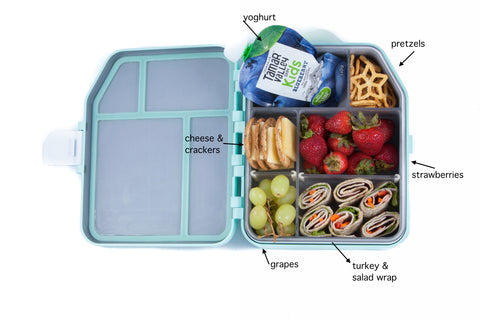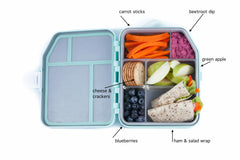Australian Bureau of Statistics research finds two kids in every classroom will go hungry

The latest Census At School data from the Australian Bureau of Statistics found children skipping breakfast is equal to about two hungry kids in every classroom across the nation. Read how your Boxi lunchbox purchase contributes to providing school lunches to marginalized children.
But while some go hungry, OzHarvest says the contents of many a lunchbox will be wasted.
"It's certainly one of the ironies of an abundant society. As we become more affluent, we seem to waste more," said OzHarvest food rescue founder Ronni Kahn.
As Australian schools open their gates this week for another year, Kellogg's has pledged to donate a minimum of two million serves of cereal through its Breakfasts for Better Days program, the equivalent of feeding 10,000 kids each school day.
The program aims to provide 12 million serves of cereal and snacks to families and children in need in Australia and one billion serves across the world by the end of 2016.
"Our program exists to support children in need and help to ensure they have the best start to their day possible, but to see one in seven children skipping breakfast remains a concern for the community at large," said Nitin Vig who leads Kellogg's free school breakfast program.

Kellogg Australia supplies free cereal to 300 schools, sporting clubs, community groups and childcare facilities, as well as to outback, indigenous and disadvantaged communities.
In contrast OzHarvest said that about $8-10 billion worth of food is wasted each year, or about four million tonnes ending up as landfill.
Australians throw out, on average, one in five shopping bags of food, which equates to $1036 worth of wasted groceries a year.
"I think that what would be really helpful is to get kids help in actually preparing what they are going to eat the next day. If they had a hand in preparing it then the chances are they are going to eat it," said Ms Kahn.
"Redistribution, recycling and minimising waste is not just about food. Parents should be giving kids school lunches in re-usable containers."
The majority of mums, 85 per cent, say they struggle to get their kids eating healthy nutritious food, a Galaxy polled conducted on behalf of breadmaker Wonder White found. Almost all mums of primary school aged children pack food from home for the school lunch box at least 1-2 days per week, with 79 per cent doing it every day.
The most common items packed into the lunch box are fresh fruit, 95 per cent, and sandwiches, 93 per cent, followed by sweet or savoury biscuits (62 per cent), muesli bars (53 per cent) and yoghurt (47 per cent).
Treats such as chips (31 per cent) and chocolate (8 per cent) are less common in primary school lunch boxes, the survey found.
RONNI KAHN'S TOP TIPS
* Pack bite-size portions, not whole fruit or vegetables.
* Transfer a serve of yoghurt to a re-usable container.
* Home-made muesli bars chopped into bite-sized pieces.
* Cut sandwiches into interesting shapes.
* Make melon into balls.
* Pack a cloth napkin, not paper.
* A chilled bottle of water, not a sugary popper.
Originally published as Two kids in every class go hungry
